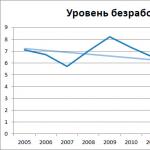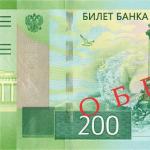
Geography presentation "Islamic Republic of Pakistan" (grade 11). Pakistan. Economic and geographical location. Natural conditions and resources Pakistan geographic location
Pakistan - a state in South Asia. In the north and northeast it borders on Afghanistan, in the northeast, east and southeast - with India, in the west - with Iran, in the south it is washed by the Arabian Sea. Disputes with India the territory of Jammu and Kashmir, which is divided between the two states.
In Urdu, "pak" means "pure" and "stan" means "country."
Capital
Islamabad.
Square
Population
144,716 thousand people
Administrative division
A federal republic with 4 provinces, a federal metropolitan area and a federally administered tribal area.
Form of government
Islamic Republic.
Head of state
President elected for a term of 5 years.
Supreme legislative body
Bicameral Parliament (National Assembly, elected for 5 years, and Senate, whose term of office is 6 years).
Supreme executive body
Government.
Big cities
Karachi, Lahore, Faisalabad, Peshawar, Rawal Pindi, Multan, Hyderabad.
Official language. Urdu.
Religion
97% - Muslims, 3% - Hindus, Christians, Sikhs, Parsis, Buddhists.
Ethnic composition
66% are Punjabis, 13% are Sindhi, as well as Pashtuns, Balochis, Braguis, etc.
Currency
Pakistani rupee \u003d 100 paisams.
Climate
Monsoon, tropical in most of the country, subtropical in the northwest. Average January temperatures in the plains are from + 12 ° С to + 16 ° С (in the highlands there are frosts down to - 20 ° С), in July - from + 30 ° С to + 35 ° С. Precipitation falls on the plains 100-400 mm per year, in the top - up to 1000 mm per year. The year in Pakistan is divided into three seasons: cool (October to March), hot (March to June) and rainy (July to September). With the onset of the hot season, it becomes hot and humid in the south, in the northern regions at this time the weather is quite pleasant. In mountainous regions, the weather directly depends on the height above sea level and can vary greatly during the day.
Flora
The vegetation is predominantly steppe and semi-desert, in the mountains there are forest areas (spruce, evergreen oak, cedar).
Fauna
The fauna is represented by bear, deer, wild boar, crocodile. A large number of fish species are found in rivers and coastal waters.
Rivers and lakes
The main river is the Indus with the Panjnad tributary.
sights
In Karachi - the mausoleum of Haida-i-Aza-ma - a monument to the founder of Pakistan, Ali Jinn, a white marble mosque of the National Defense Society (its only dome is believed to be the largest in the world), the House of the Honeymoon, where the Aga Khan was born, St. Trinity, St. Andrew's Church, city zoo. In Lahore, the Mall is of interest - a place of classic English parks and buildings in the colonial British style, the largest and best Lahore museum in the country, the famous Kim cannon - an instrument immortalized in Kipling's "Kim".
Useful information for tourists
Pakistan is the country of the most majestic landscapes in Asia, numerous cultural traditions and extremely hospitable people.It is one of the earliest human settlements, the cradle of an ancient civilization, challenging the leadership of Egypt and Mesopotamia, the place where Islam, Hinduism and Buddhism meet. Archaeological monuments of the Harappan civilization (III-II millennium BC), Persia and other ancient states are of particular importance.
1) General information about the country
Islamic Republic of Pakistanاسالمی جمہوریۂ پاکستان
National motto:
"Iman, Ittehad, Nazm
(Urdu Faith, Unity,
Discipline)"
Anthem: "Qaumi Tarana"
Independence date:
August 14, 1947 (from
Great Britain) Flag
Emblem Capital - Islamabad
Area - 803 940 km²
Population - 6th in the world
159 652 399 people
Density - 202 people / km²
GDP - 26th in the world
$ 360.8 billion
Per capita - $ 2221
Currency - Pakistani
rupee
Internet domain - .рk
Calling code - +92
Time zone - UTC +5
Islamabad Faizal Mosque
Currency - 100 rupees
2) Political and economic-geographical position of the country
Form of government - Presidential Republic,consisting of 4 provinces (Punjab, Sindh, Northwestern Frontier and Baluchistan). Chapter
states - the president, elected by the federal
parliament (upper house (Senate) and lower house
(National Assembly) for a period of 5 years.
Legal branch of government
presented The Supreme Court (whose members
appointed by the President) and the Federal Islamic
Sharia court. Government approved
president, formed and headed by the prime minister, usually representing the party or
majority coalition in the National Assembly. The Senate has 100 members, elected
deputies of the lower house of the federal
parliament and legislatures
provinces by majority scheme. Term
powers of the senate - 6 years. One third of the composition
Senate is renewed every 2 years. National
the assembly consists of 342 deputies, 272 out of
which are elected by the population as a direct secret
voting by proportional
representation for a period of 5 years. 60 seats
provided for women, 10 places
reserved for representatives
religious minorities. President - Asif Ali
Zardari
Prime Minister Yusuf Reza Gillani
Administrative division
12
3
4
5
6
7
8
Baluchistan
Northwest
Border
Punjab
Sindh
Stolichnaya
Tribes
Azad-Kashmir
North
3) Natural resource conditions
Pakistan is located in the northwest of the SouthAsia, stretching from southwest to northeast
1500 km. Within Pakistan, one can distinguish
three orographic areas - flat east,
mid-mountainous west and high-mountainous north. On South
the territory of Pakistan is washed by the waters
The Arabian Sea forming low, weak
rugged shores. Pakistani nature
The climate in Pakistan is dry
continental
tropical, in the northwest - subtropical,
in the mountains in the north of the country -
more wet with a clear
pronounced high-rise
zoning.
Largest river
Pakistan is the Indus,
whose pool
belongs to a large
part of the country.
4) General characteristics of the population
Ethnic composition: Punjabis, Sindhi, Pashtuns,Baluchis, etc. The majority of believers 97% -
Muslims (Sunnis 77%, Shiites 20%), Christians,
Hindus. State languages \u200b\u200b- Urdu and
English; at the same time 60% of the population says
in Punjabi, 16% in Pashto, 12% in
sindhi. Over 60% of the population is literate, the system
higher education is considered quite
high quality.
Pakistani population
Sex composition of the population
The average age of the population in men is 19.7 years, inwomen 20.0 years. Average duration
life for men 61.3 years, for women 63.1 years,
total - 62.2 years. 39.3% of Pakistani population
are citizens under the age of 14, 56.5%
citizens from 15 to 64 years old and 4.2% over 65 years old.
The plight of women in society leads
to their high mortality, therefore in Pakistan
the male population prevails. For every 1000
women account for 1047 men.
Rural Pakistani
There are two education systems in Pakistan.The traditional system introduces students to
Islamic disciplines and gives knowledge of Urdu,
Arabic and sometimes also Persian.
Teaching remains the most conservative
in theological schools of madrasahs functioning
at the mosques. In the higher schools of this system, darul-ulum, students for 5-15 years receive
solid theological training. Eventually
graduate becomes a respected scientist
human - ulema. The two most famous darul-ulums operate in Karachi and Lahore.
5) Branches of international specialization of the economy
Pakistan is an agro-industrial country. Bigpart of the labor force is employed in agriculture.
In 1952, the first deposits of natural
gas in Baluchistan, but then they were found in Sindh
and Punjab. 7 deposits discovered
oil. Oil reserves are estimated at 300 mln.
barrels. From other minerals
coal, chrome ores, marble are mined,
table salt, limestone, uranium, phosphorites,
barite, sulfur, precious and semi-precious
stones. In April 2005
Pakistan started
production
car
own
manufactured by REWO.
There is also a factory
car assembly
KAMAZ in Karachi. Agriculture
More than half of the population is employed in agriculture.
Land reforms led to the transfer of the main part
land from landlords to large farmers. In the 1960s.
after the Green Revolution, Pakistan is mainly
provides himself with food. After the USA and
Thailand's country is the world's third largest exporter
rice. subsidies are used to increase production
sugar cane. Culture is traditionally important
cotton, but growing it is not enough
efficiently. The state subsidizes irrigation
work. Livestock provides the domestic market
meat and dairy products. Export products -
wool and leather. One of the world's leading
cotton producers; important exporter of rice.
Minare
Lahore Museum
Badshani Mosque
On the street of Islamabad
RUINS OF A BUDDHIST TEMPLE in Taxila, near Islamabad
Conclusion on the development of the country
Pakistan remains a poor country wheremost of the working population is employed in
agriculture. Pakistan is strong
interethnic and religious conflicts. As in
most third world countries, Pakistan
foreign funds play an important role,
coming in the form of grants and
credits.
States of Latin America. Borders, population and economy.
There are several subregions in Latin America. This is Central America (Mexico, the countries of Central America, and the West Indies) These are the Andean countries (Venezuela, Colombia, Ecuador, Peru, Bolivia, Chile) These are the countries of the La Plata basin (Paraguay, Uruguay, Argentina). The territory of Latin America stretches from north to south for 13 thousand km, and from west to east for a maximum of 5 thousand km. In terms of area, all countries in the region can be divided into very large (Brazil), large and medium (Mexico and most of South America), relatively small (Central America and Cuba) and very small (West Indies). Boundaries between mainland countries for the most part run along mountain ranges and large rivers. EGP Latin America is defined by the fact that it is located in comparative proximity to the United States, but at a great distance from others large regions... [I]. However, this unfavorable circumstance is partly overcome due to the "pull" of many important sea routes by the Panama Canal. In addition, all countries in the region, with the exception of Bolivia and Paraguay, either have wide access to the oceans and seas, or are island countries. The modern ethnic composition of the population of Latin America has developed under the influence of three components.
The first component was made up of Indian tribes and nationalities,inhabiting the territory of the region before the arrival of Europeans. Among them were such creators of high agricultural civilizations as the Aztecs and Mayans in Mexico, the Incas in the Central Andes. Today the indigenous Indian population in the region is approximately 15%. Many place names in Latin America, as well as in North America, are of Indian origin. The second component was formed by European settlers,primarily from Spain and Portugal (they are called Creoles). Until the beginning of the 19th century. European immigration was relatively small, but then it became large. The third component was formed by Africans,which, starting from the 16th century .. colonialists imported into Brazil. West Indies and some other countries for plantation work. Three centuries of the slave trade have led to the fact that today in Latin America, blacks make up 1/10 of all inhabitants. More than half of the region's population are descendants of mixed marriages: mestizos, mulattos. Therefore, almost all Latin American nations have a complex ethnic background. In Mexico and Central America, mestizos predominate, in Haiti, Jamaica, and the Lesser Antilles, negros. Most of the Andean countries are dominated by Indians or mestizos, in Argentina. Uruguay, Chile and Costa Rica are Spanish-speaking Creoles, while in Brazil there are only slightly fewer mulattoes and blacks than “whites”. The development of agriculture is characterized by two different sectors: the first sector is a highly commodity, mainly plantation economy, which in many countries has acquired the character of a monoculture. The second sector is consumer small-scale agriculture. The peasants employed there grow corn, cassava, beans, vegetables, potatoes. One of the main reasons for the backwardness of agriculture in the region is the preservation of old forms of land tenure and land use.
PAKISTAN, Islamic Republic of Pakistan (Islam-i Jamhuriya-e Pakistan), a state in South Asia, on the Indian subcontinent. Borders with India, Afghanistan, Iran. The area is 796 thousand km2. The population is about 150.64 million people (2003). Part of the Commonwealth. The capital is Islamabad. In terms of economic structure and income level, Pakistan is closer to the countries of East and Southeast Asia than to India and other states of Hindustan. GNP per capita is $ 470 (1999). More than half of the population is employed in agriculture. Land reforms led to the transition of the bulk of land from landlords to large farmers. In the 1960s. since the Green Revolution, Pakistan is largely self-sufficient in food. After the USA and Thailand, the country is the third largest exporter of rice in the world. subsidies are used to increase sugarcane production. The culture of cotton is traditionally important, but so far its cultivation is not efficient enough. The state subsidizes irrigation works. Livestock provides the domestic market for meat and dairy products. Export products are wool and leather. Pakistan's industrial sector is under government control. A significant part of the enterprises is state-owned, while the other part is controlled by the state using a complex licensing and quota system. Using laws on labor, health care, taxes, the state exercises control over the state of affairs in the private sector. The dominant position is occupied by the textile industry, leather, pulp and paper, food. With the participation of the USSR, a steel plant was built near Karachi. Mechanical engineering and chemical industries are encouraged.
Pakistan - is located in Southwest Asia, between 60 ° 55` and 75 ° 30` east longitude and 23 ° 45` and 36 ° 50` north latitude and stretches from southwest to northeast for almost 1500 km. Area: total - 803.94 sq. Km.
Most of the territory is highlands and mountainous areas, the northern and northwestern parts are represented mainly by mountains and uplands, the eastern and southeastern parts are represented by the low-lying flat plain of the Indus. The highest peak in the country is Tirichmir, 7690 m. In the north, the Himalayan and Hindu Kush ridges rise. It is washed by the waters of the Arabian Sea in the south, bordered by Iran in the southwest, Afghanistan in the northwest and north, China in the northeast and India in the east. Land borders: India - 2,912 km, Afghanistan - 2,430 km, Iran - 909 km, China - 523 km.
Pakistan is the sixth most populous country in the world, with the second largest Muslim population in the world after Indonesia. Pakistan is a member of the United Nations, the Commonwealth of Nations, the World Trade Organization, an observer in the Shanghai Cooperation Organization, a member of the G33 developing countries, the Group of 77 developing countries.
Pakistan is a federal republic consisting of 4 provinces (Punjab, Sindh, Khyber Pakhtunkhwa (formerly the Northwest Frontier Province) and Baluchistan). In addition to the provinces, Pakistan also includes the Federally Administered Tribal Territories and the Gilgit-Baltistan and Free Kashmir regions (the latter is de jure recognized by Pakistan as an independent state, but is actually part of it), contested by India.
Relief of Pakistan
Within Pakistan, two large orographic regions are clearly distinguished - the Indus Plain (the western part of the Indo-Gangetic Plain) and the mountains and hills bordering it from the west and north, belonging to the systems of the Iranian Highlands and the Hindu Kush and the Himalayas, formed mainly in the era of the Alpine orogenesis. The Indian Plain arose on the site of a vast foothill foredeep, to which considerable reserves of natural gas and oil are confined. Significant deposits of brown coal, chromite ore and other minerals have been discovered in the mountains.
The Indian Plain is one of the largest alluvial plains in the tropical belt, stretching from the foothills of the Himalayas to the Arabian Sea for 1200 km with a width of up to 550 km. Almost all of its territory is located below 200 m and is characterized by a monotonous flat relief. Three parts are distinguished within its boundaries: the northern one - Punjab (or Five Rivers), formed by the Indus and its five large tributaries (Dzhelam, Chinab, Ravi, Bias and Sutlej); Sindh - middle and lower Indus; and the Thar desert to the east of Sindh.
In the north of the plain, there are numerous debris removal cones cut by rivers. In Sindh, in the interfluves, traces of an ancient river network have been preserved, indicating a greater flooding of the plain in the past. The Indus Delta is formed by several active channels, dead estuaries and a series of ancient sandy coastal ramparts. In the Thar Desert, dunes, dunes, sand ridges are common in combination with salt marshes, takyrs and salt lakes in depressions. The absolute height of this region is from 100 to 200 m. From the south, the desert is framed by the saline lowlands of the Bolshoy Kachsky Rann, flooded with sea tides and during heavy rainfall.
The mountains of Pakistan are young folded ridges composed of crystalline shales, limestones, sandstones and conglomerates. The highest ridges are dissected by river valleys and gorges and are crowned with snowfields. In the far north, the axial ridges of the Hindu Kush with the peak of Tirichmir (7690 m), which is the highest point of the country, partly enter Pakistan. To the east is the Hinduraj ridge, the southwestern end of which is separated from the border ridge Spingar by the Khyber Pass (1030 m), the most important pass used for communication between Peshawar and Kabul. In the northeast, the western spurs of the Himalayas enter Pakistan. In the north of Pakistan, between the Indian Plain and the mountains, there is the Potwar sandstone plateau with an average altitude of 300–500 m, bordered from the south by the Salt Ridge (up to 1500 m).
The western part of Pakistan is occupied by the plateau and mountains of Baluchistan, which are the southeastern framing of the Iranian highlands. The average heights of these mountains usually do not exceed 2000–2500 m. Such are, for example, the Suleimanovy mountains, which are elongated in the submeridional direction and abruptly drop off to the Indus valley. However, in the north of these mountains there are also higher individual peaks (up to 3452 m). The Kirthar meridional ridge with steep slopes facing the Indus Valley almost reaches the coast of the Arabian Sea and drops from 2440 m in the north to 1220 m in the south.
The Makran Mountains, consisting of several subparallel ridges up to 2357 m high, flank the Baluchistan plateau from the south. From the north, it is bordered by the border mountains of Chagai, where there are extinct volcanoes. Further to the northeast, the Tobakakar ridge stretches (up to 3149 m), at its western end is the Khojak (Bolan) pass, through which a strategically important route from Quetta to Kandahar (Afghanistan) passes.
Natural disasters are not uncommon in the mountains of Pakistan. So, in the highlands, avalanches often descend, mudflows, rockfalls, glacial pulsations (serdzhi) occur. There are a number of seismically hazardous areas. In 1935 the city of Quetta was badly damaged by an earthquake.
Hydrology of Pakistan
The largest river in Pakistan is the Indus, the basin of which belongs to most of the country. Rivers in the west are either endless or have a local flow into the Arabian Sea. The main tributary of the Indus is the Sutlej, which collects the waters of the main rivers of the Punjab (Chinab, Ravi, Dzhelam, Bias) and gives water to large irrigation canals (Dipalpur, Pakpattan, Panjnad). On large rivers, there is a summer flood due to monsoon rains and melting of glaciers in the mountains.
Climate of Pakistan
The climate in Pakistan is dry continental tropical, in the northwest - subtropical, in the mountains in the north of the country - more humid with a clearly expressed altitudinal zonation. Winter on the plain is warm (12-16 ° C, on the coast up to 20 ° C), in the highlands - severe (down to -20 ° C). Summers are hot (in deserts 35 ° C, on the coast 29 ° C, in the mountains and on the plateaus of the Iranian Highlands 20-25 ° C), in the highlands - frosty (at altitudes from 5000 m - below 0 ° C). Annual precipitation ranges from 50 mm in the Thar desert, to 100-200 mm in Sindh, 250-400 mm in the valleys and plateaus of the Iranian highlands, 350-500 mm in the foothills and 1000-1500 mm in the mountains in the north of the country. Most of the precipitation falls during the southwestern monsoon (in July - September), within the Iranian Highlands - in the winter and spring.
Powerful winds are frequent, and in summer they bring dusty and hot dry air masses from the territory of the Registan, Sindh, Rasht, Kharan, Thal and others deserts, and in winter - cold from the mountainous regions. Such contrasting natural and climatic conditions lead to the formation of many local areas - even two slopes of the same valley can have completely different weather from each other. Moreover, even within the same season, the regions of the country differ markedly from each other in terms of weather. In the south, the cool season brings dry days and cold nights, while in the northern mountains it rains at this time, and frosts can be at night. During the hot season, the south is stiflingly hot and humid, while the north is quite comfortable and even pleasant weather. In the wet season, rains literally flood the narrow belt of Punjab from Lahore to Islamabad, and in the north it is dry and almost cloudless for a year.
Soils and flora of Pakistan
In the Indus Plain, fertile alluvial soils are widespread in river valleys and semidesert serozem soils in the interfluves. In mountainous areas, chestnut, brown forest, subalpine and alpine mountain meadow and meadow-steppe soils are successively replaced from bottom to top. In the intermontane depressions of Baluchistan, sandy desert soils and salt marshes are common, in the south of Sindh - salt marshes, and within the Thar desert - barren sands.
In the Indus Plain, herbaceous-shrub semi-desert (Punjab) and desert (Sindh) vegetation prevails. Excessive plowing and grazing of livestock, intensive water withdrawal, and the removal of woody vegetation have led to a decrease in river flow, landscape degradation and an expansion of the area of \u200b\u200banthropogenic deserts. Wormwood, capers, camel thorn, and saltwort dominate in the sparse vegetation cover. Cereals settle on the fixed sands. Scattered trees and groves, usually mangoes and other fruit trees, grow along roads, around villages and wells.
Gallery forests of Euphrates poplar and tamarisk are preserved in places along the river valleys. Thanks to artificial irrigation, large areas in the Indus basin and its tributaries have been transformed into a system of oases, where rice, cotton, wheat, millet and other crops are grown.
The highlands of Baluchistan are dominated by desert vegetation with characteristic thorny cushion forms (acanthus, astragalus, etc.). Wormwood and ephedra are widespread. Higher up in the mountains there are sparse forests of olive, pistachio, juniper.
In the mountains in the north and north-east of Pakistan, coniferous and deciduous forests have survived, occupying approx. 3% of the country's area. In the Salt Ridge, located between the Dzhelam and Indus rivers and forming the southern edge of the Potvar plateau, as well as in the foothills of the Himalayas and in some other regions of the country, peculiar subtropical light forests of evergreen xerophytic species grow. It is dominated by wild olives, acacias and dwarf palms. In the mountains at an altitude of 2000-2500 m above sea level. significant areas are occupied by high-stemmed forests of evergreen broad-leaved species, mainly oaks and chestnuts. Higher up, they are replaced by majestic forests of Himalayan cedar (Cedrus deodara), long-coniferous pine (Pinus longifolia), fir and spruce. They often have a dense shrub layer of magnolia, laurel and rhododendron.
Mangrove forests grow in the Indus Delta and on the coast of the Arabian Sea.
Fauna of Pakistan
The fauna of Pakistan is represented by Indo-African, Central Asian and Mediterranean species. Large mammals in the mountains include the leopard, snow leopard, brown and white-breasted bears, foxes, wild goats and rams, and the Persian gazelle; on the plains - hyenas, jackals, wild boars, antelopes, gazelles, kulans, wild donkeys, numerous rodents. The world of birds is diverse (eagles, vultures, peacocks, parrots). There are many snakes, including venomous ones, crocodiles are found in the Indus. Invertebrates include scorpions, ticks, and malaria mosquitoes. The Arabian Sea is rich in fish (tuna, herring, sea bass, Indian salmon), crustaceans (shrimp) and sea turtles.
National parks of Pakistan
Khazarganji-Chiltan - Pakistan's National Parks are designed to protect and preserve outstanding landscapes and wildlife in their natural state. Protection and security environment in Pakistan was first incorporated into the 1973 Constitution, but the Environmental Protection Ordinance was not adopted until 1983. In accordance with the legislation of the "Modern Protected Areas", national parks can be used for research, education and recreation. They prohibit the construction of roads and rest homes, the clearing of land for agricultural purposes, water pollution, the use of firearms, and the destruction of wild animals. The parks are administered by the following government departments: the Ministry of the Environment and the Bureau of Biodiversity.
As of 2010, there are 25 national parks in Pakistan, 19 of which are under state control and the rest are in private hands. The oldest national park, Lal Suhanra in the Bahawalpur area, was established in 1972. This is the only national park that existed before the declaration of independence of the country, in addition, it is the only biosphere reserve in Pakistan. The last of the parks, Cala Citta, was established in 2009. Central Karakorum in Gilgit-Baltistan is the largest national park in the country, covering an area of \u200b\u200babout 1,390,100 hectares. The smallest national park is Ayyub, with a total area of \u200b\u200babout 931 hectares.
Pakistani population
Pakistan is one of the largest countries in the world in terms of population (177.3 million people, 6th in the world - estimate as of July 2010). According to some forecasts, with current trends, the population of Pakistan could reach more than 200 million by 2020.
The bulk of the population lives in the Indus Valley. Most big cities Pakistan are located in the eastern part of the country (Karachi, Lahore, Rawalpindi, etc.). Urban population countries - 36% (in 2008). Ethnic composition: Punjabis 44.7%, Pashtuns 15.4%, Sindhi 14.1%, Saryaks 8.4%, Muhajirs 7.6%, Baluchis 3.6%, etc. (6.3%). The majority of believers - 95% - Muslim: (Sunnis 75%, Shiites 20%), 5% - Christians and Hindus. Almost 50% of the population is literate (63% of men and 36% of women, 2005 estimate).
Source - http://ru.wikipedia.org/
http://www.uadream.com/
















